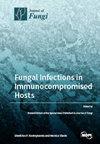Metals Transfer in Mushroom Tricholoma matsutake from Regional High Geochemical Background Areas: Environmental Influences and Human Health Risk
IF 4.2
2区 生物学
Q2 MICROBIOLOGY
引用次数: 0
Abstract
Wild-grown edible mushrooms are important in world diets and are also efficient metal accumulators. Yunnan, Southwest China, is the main producing region, with typically high levels of geochemical metals. The environmental factors, bioaccumulation, distribution and human health risks of metals were examined in paired soil and Tricholoma matsutake (n = 54). T. matsutake grows on acidified soils (pH = 3.95–6.56), and metals show a strong heterogeneity, with Fe, Mn, Zn and Cu in the ranges of 16–201, 0.046–8.58 g kg−1, and 22.6–215, 3.7–155 mg kg−1. High soil Fe content led to great accumulation in T. matsutake (0.24–18.8 g kg−1). However, though the soil Mn content was higher than that of Zn and Cu, their concentrations in T. matsutake were comparable (21.1–487 vs. 38.7–329 and 24.9–217 mg kg−1). This suggested that T. matsutake prefers to accumulate Zn and Cu compared to Mn, and this is supported by the bioaccumulation factors (BAFs = 0.32–17.1 vs. 0.006–1.69). Fe was mainly stored in stipes, while Mn, Zn and Cu were stored in caps, and the translocation factors (TFs) were 0.58 vs. 1.28–1.94. Therefore, stipe Fe showed the highest health risk index (HRI) at 1.28–26.9, followed by cap Cu (1.01–2.33), while 98–100% of the Mn and Zn were risk-free. The higher concentration and greater risk of Fe was attributed to the significant effect of soil Fe content (R = 0.34) and soil pH (R = −0.57). This study suggested that Fe, as an essential mineral, may exert toxic effects via the consumption of T. matsutake from high geochemical background areas.区域高地球化学背景区松茸中的金属转移:环境影响与人类健康风险
野生食用菌在世界饮食中占有重要地位,同时也是高效的金属蓄积物。中国西南部的云南是食用菌的主产区,其地球化学金属含量通常很高。本研究考察了配对土壤和松茸(n = 54)中金属的环境因素、生物累积、分布和对人类健康的危害。松茸生长在酸化土壤(pH = 3.95-6.56)中,金属元素显示出很强的异质性,铁、锰、锌和铜的含量范围分别为 16-201, 0.046-8.58 g kg-1 和 22.6-215, 3.7-155 mg kg-1。土壤中铁的高含量导致松茸大量积累(0.24-18.8 克千克-1)。然而,虽然土壤中锰的含量高于锌和铜,但它们在松茸中的浓度却相当(21.1-487 vs. 38.7-329 and 24.9-217 mg kg-1)。这表明,与锰相比,松茸更喜欢积累锌和铜,生物累积系数(BAFs = 0.32-17.1 vs. 0.006-1.69)也证明了这一点。铁主要储存在叶柄中,而锰、锌和铜储存在叶盖中,易位因子(TFs)为 0.58 vs. 1.28-1.94。因此,叶柄铁的健康风险指数(HRI)最高,为 1.28-26.9,其次是叶盖铜(1.01-2.33),而 98-100% 的锰和锌没有风险。铁的浓度越高、风险越大,是因为土壤中铁的含量(R = 0.34)和土壤 pH 值(R = -0.57)的显著影响。这项研究表明,铁作为一种人体必需的矿物质,可能会通过食用高地球化学背景地区的松茸而产生毒性作用。
本文章由计算机程序翻译,如有差异,请以英文原文为准。
求助全文
约1分钟内获得全文
求助全文
来源期刊

Journal of Fungi
Medicine-Microbiology (medical)
CiteScore
6.70
自引率
14.90%
发文量
1151
审稿时长
11 weeks
期刊介绍:
Journal of Fungi (ISSN 2309-608X) is an international, peer-reviewed scientific open access journal that provides an advanced forum for studies related to pathogenic fungi, fungal biology, and all other aspects of fungal research. The journal publishes reviews, regular research papers, and communications in quarterly issues. Our aim is to encourage scientists to publish their experimental and theoretical results in as much detail as possible. Therefore, there is no restriction on paper length. Full experimental details must be provided so that the results can be reproduced.
 求助内容:
求助内容: 应助结果提醒方式:
应助结果提醒方式:


